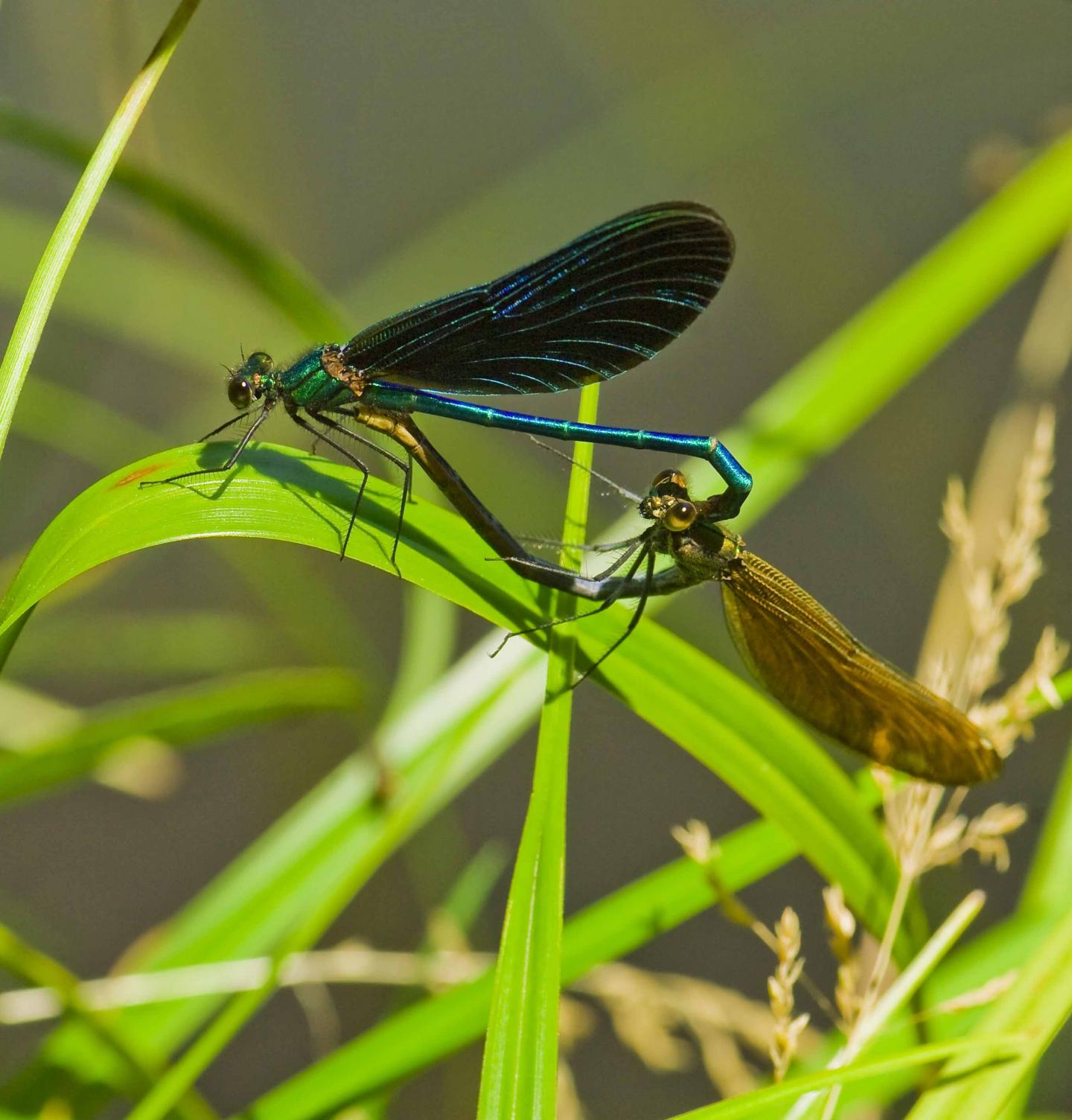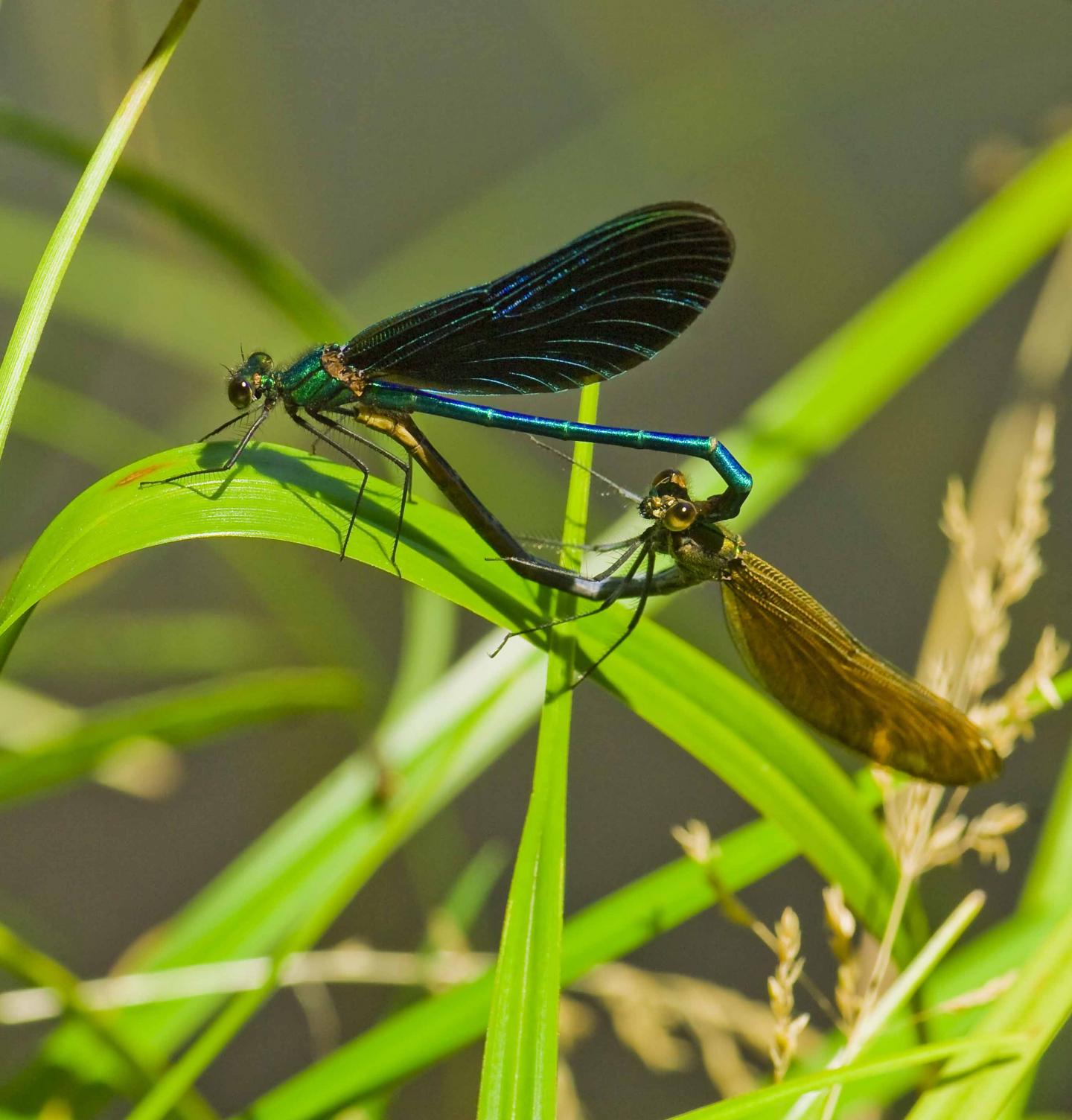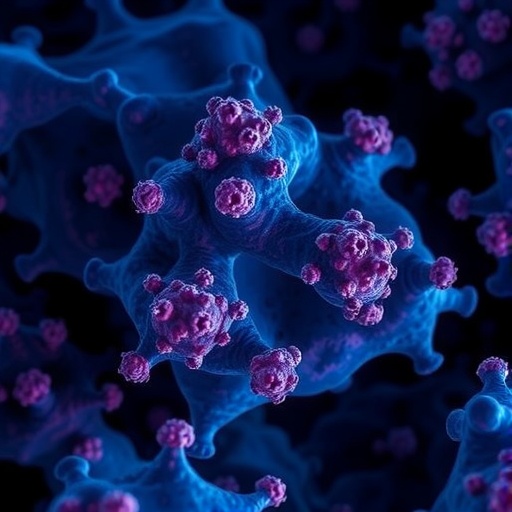
Traditionally, the evolutionary development of an insect species has been explained by the notion that the female insect chooses her male partner based on size and other factors, so-called assortative mating. These mating patterns have also been believed to partially explain how the isolation between different species is maintained.
However, new research from Lund University in Sweden shows just the opposite: assortative mating breaks down the sexual barrier between species rather than preserves it, which could lead to species becoming extinct. This discovery can be of significance within nature and species conservation.
The researchers have studied the morphological variation of two closely related species of damselflies – the smaller banded demoiselle and the larger beautiful demoiselle. The researchers have studied how this variation in appearance, shape and size affect the likelihood that damselflies mate, both within and between the two species.
The results show that large females mate with large males within their own species, but also that some males of the smaller banded demoiselle species choose to mate with females of the larger beautiful demoiselle species. Several additional experiments show that the power of attraction between different species mainly works in this direction, and not the other way around; that is, males of the larger species are not attracted to the females of the smaller species.
According to Erik Svensson, evolutionary biologist at Lund University, the size of the females reflects their reproductive capacity. This in turn explains why the males of the smaller species are attracted to females of the larger species, as large females have high fecundity, i.e. are highly capable of producing offspring. They probably also have a higher survival rate than small females.
"Mating patterns based on the size and quality of individuals partially counteract the sexual barrier between these two species. Our results also show that the sexual selection, when males compete for females, does not necessarily maintain the isolation between species; rather, it weakens it", says Erik Svensson.
When closely related species meet, males competing for females can in some cases lead to species becoming extinct, if the males of the smaller species are attracted to females of the larger species. The research results from Lund University can become important to nature conservation and species preservation around the world.
"So far this is basic research, but in 10-20 years' time, nature conservationists will perhaps start to consider these aspects when trying to reintroduce or preserve endangered species", says Erik Svensson.
The researchers have studied hundreds of individual insects in their natural populations around southern Sweden. The study has included the morphological properties that reflect their size and shape, as well as their mating behaviour.
The results are published in an article in the July issue of the scientific journal Evolution where it is featured as the top story.
###
Article
Svensson, E et al (2016) Linking intra- and interspecific assortative mating: Consequences for asymmetric sexual isolation
Further information
Erik Svensson, professor
Lund University, Department of Biology
+46-46-222 38 19
+46-705-970 403
[email protected]
Media Contact
Cecilia Schubert
[email protected]
46-073-062-3858
@lunduniversity
http://www.lu.se





